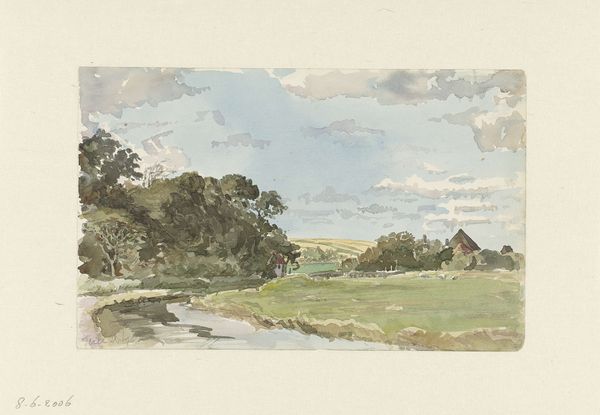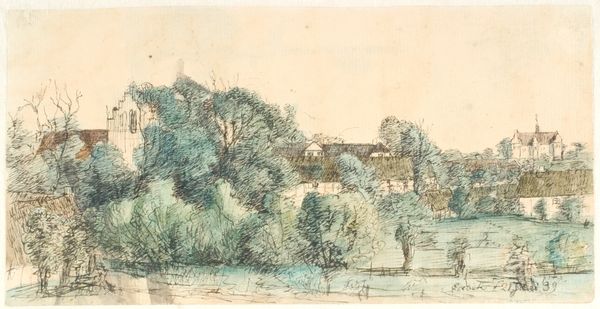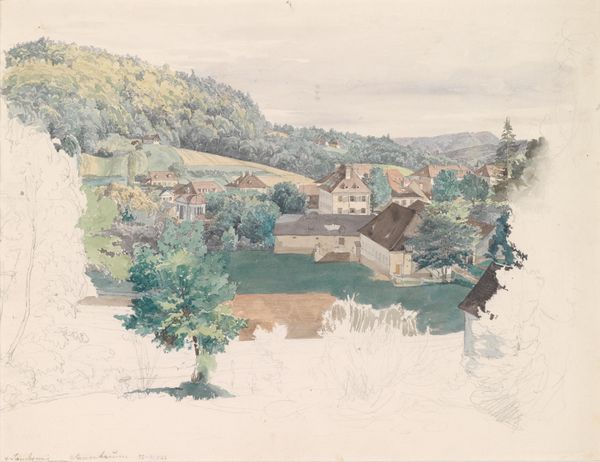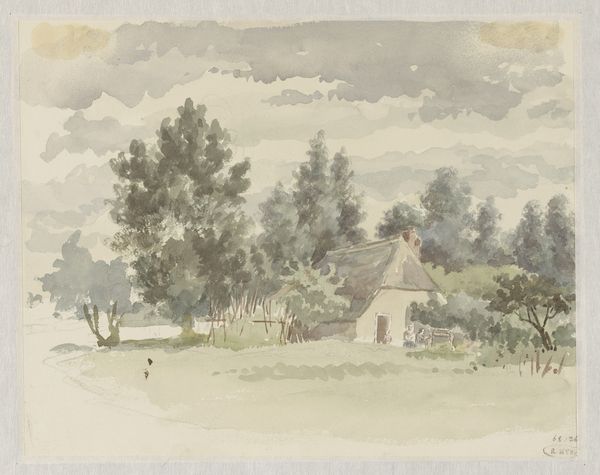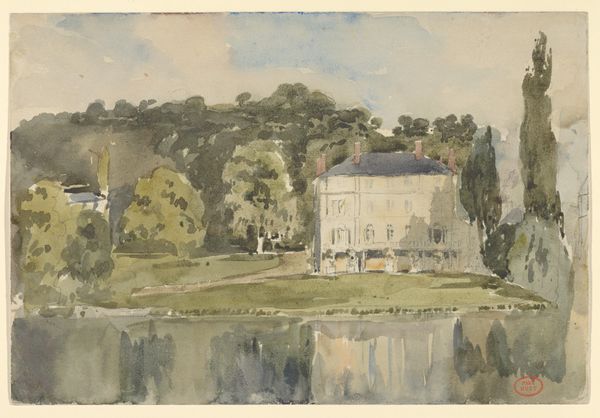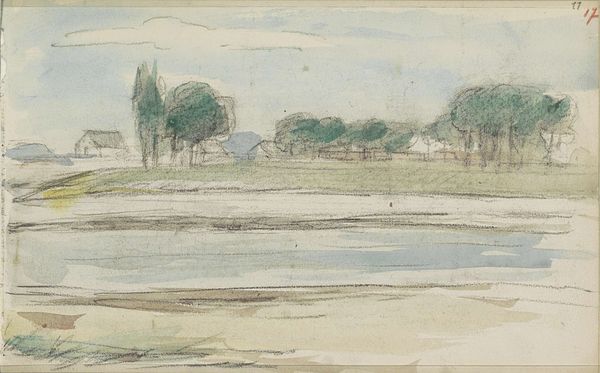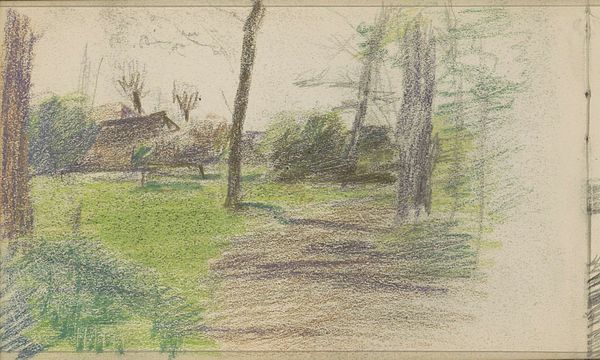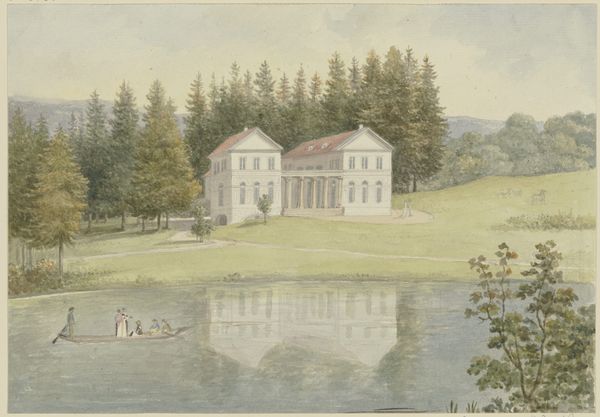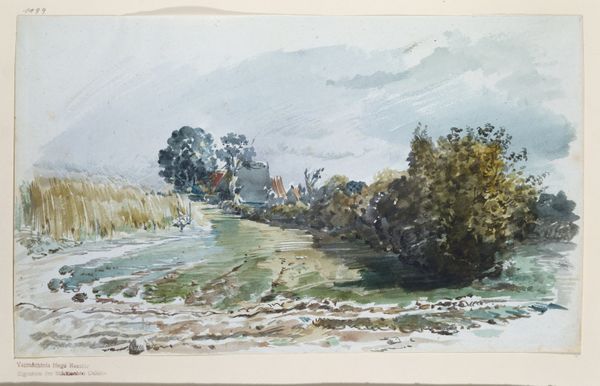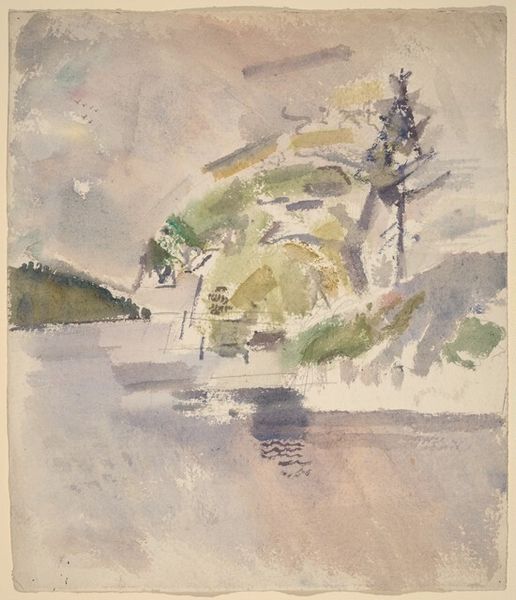
Copyright: Public Domain: Artvee
Curator: This delicate watercolor before us is titled "Hrabušice," painted in 1891 by Jozef Hanula. Editor: My first impression is one of serenity, but also a certain… coolness. The predominantly green and gray palette creates a rather tranquil but slightly melancholic mood. Curator: Hanula, a master of plein-air painting, certainly captures the atmosphere of the Slovakian countryside. The way he's used the watercolor medium to depict the light is really striking. Consider the muted reflections on the water’s surface. How do you see its significance relating to nature? Editor: The absence of people is palpable; to me, this highlights the tension between humans and nature. It encourages a look at how land ownership and societal needs, viewed through critical lenses, impacted landscape painting as an artistic practice and its relevance. Curator: Interesting. Considering this piece was painted in the late 19th century, one can certainly view it through the lens of the emerging environmental movements and anxieties regarding industrialization that shaped landscape representation. This is not a heroic representation; it shows more domesticity with touches of impressionism. Editor: Absolutely. There's something powerful in that quietude. The almost photorealistic rendering of the architecture in comparison to the more abstract rendering of foliage reflects an acknowledgment that landscape itself becomes, especially for working classes, less something enjoyed and more an owned and operated property. Curator: Indeed. This brings forth another layer. These works not only reflect what's happening at that time, but they reflect issues that still are happening and invite us to have conversation with it through history, gender, race, and class differences. Editor: Thinking of intersectional elements helps to consider access, environmental rights, and ecological responsibility and how the landscape plays as inspiration in various cultures to find resistance. Well, thank you, this has given me so much food for thought about this little watercolor! Curator: And to me. Art really is a product of a historical moment, open to continual reinterpretation through evolving societal understandings.
Comments
No comments
Be the first to comment and join the conversation on the ultimate creative platform.


